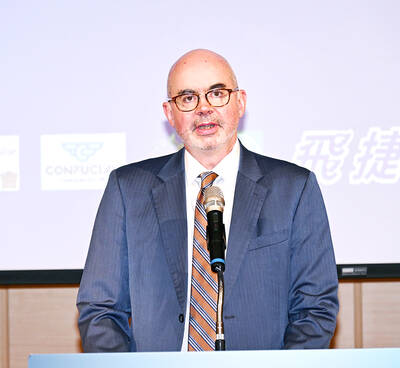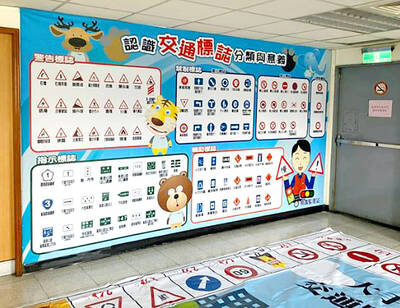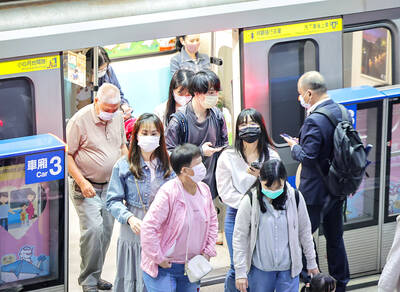The global financial crisis put a dent in corporate dealmaking last year, and activity will likely be subdued this year with many deals being “mergers of necessity,” analysts said.
Global merger and acquisition (M&A) volume fell 28 percent last year to a total value of US$3.33 trillion following a record year in 2007, the research firm Dealogic said.
The fourth quarter was especially weak, with mergers down 36 percent from the same period in 2007 to US$651 billion, the firm said in its report for last year.
Moreover, a record 1,362 planned deals were scrapped last year with a total value of US$923 billion, Dealogic said. BHP Billiton’s withdrawn bid for Rio Tinto, at US$147.8 billion, was the largest ever deal to be withdrawn.
A separate report by PricewaterhouseCoopers (PwC) pointed out that financing has become a problem for big corporate deals because of the global credit crisis.
PwC said that in the first 11 months of last year the number of mergers and acquisitions worldwide was 8,190, a 22 percent drop from the same period in 2007.
“There’s just no credit out there,” PwC partner Greg Peterson said.
Potential acquirers “just can’t finance anything,” he said.
Even if firms seek to use their stock for an acquisition, Peterson said, “the value of the shares has dropped substantially and they would have to use so much of their stock in a takeover.”
Potential takeover targets were also wary, he said: “They don’t want to take stock” instead of cash, limiting the likelihood of deals.
At the start of this year, the few mergers being worked on are deals aimed at helping distressed companies survive, PwC notes.
“Troubled companies will look to align with larger, stronger players in order to survive, creating the perfect storm for mergers of necessity,” PwC partner Robert Filek said.
Even venture capital deals, which often fund start-ups and technology deals without borrowed funds, have been hurting as investors step back in the face of market turbulence.
The National Venture Capital Association cited 260 mergers and acquisitions last year, the first year since 2003 when there were fewer than 300 venture-backed acquisitions.
The group cited six venture-backed initial public offerings (IPOs) of shares in the year, with a value of US$470 million, compared with 86 IPOs in 2007 with a combined value of over US$10 billion.
“The IPO market virtually shut down in the second quarter,” said Emily Mendell, vice president of the NVCA.
“The acquisition market is impacted by how healthy the public markets are, and we began to see problems in the third quarter,” she said.
“We’re hoping the market will reopen in late 2009 or early 2010,” Mendell said. “The market needs to stabilize, investors need to regain some confidence. It going to be a year of survival and those who do survive will do very well.”
Private equity deals, which may use borrowed funds, also faced troubles.
Dealogic said private equity deals fell 71 percent last year to a total value of US$658 billion, with no deals worth more than US$5 billion. The fourth quarter was even worse, with an 84 percent drop.
Canceled private equity deals amounted to US$132.3 billion, including the whopping US$48.5 billion acquisition of Canada’s BCE Enterprises, which was scrapped last month.
Some of the gap was filled by sovereign wealth funds, which accounted for US$56.7 billion deals last year, slightly above 2007 levels. The largest deal was the US$12.5 billion investment in Citigroup by a group that included Singapore’s and Kuwait’s sovereign funds.
There is little to suggest an immediate return to the heady period of dealmaking, PwC’s Peterson said.
“The dealmakers believe we may not have hit the bottom, and if unemployment continues to go up and business transactions continue to go down it may be wise to wait,” he said.

RESILIENCE: Deepening bilateral cooperation would extend the peace sustained over the 45 years since the Taiwan Relations Act, Greene said Taiwan-US relations are built on deep economic ties and shared values, American Institute in Taiwan (AIT) Director Raymond Greene said yesterday, adding that strengthening supply chain security in critical industries, enhancing societal resilience through cooperation and deepening partnerships are key to ensuring peace and stability for Taiwan in the years ahead. Greene made the remarks at the National Security Youth Forum, organized by National Taiwan University’s National Security and Strategy Studies Institution in Taipei. In his address in Mandarin Chinese, Greene said the Taiwan-US relationship is built on deep economic ties and shared interests, and grows stronger through the enduring friendship between

GAINING STEAM: The scheme initially failed to gather much attention, with only 188 cards issued in its first year, but gained popularity amid the COVID-19 pandemic Applications for the Employment Gold Card have increased in the past few years, with the card having been issued to a total of 13,191 people from 101 countries since its introduction in 2018, the National Development Council (NDC) said yesterday. Those who have received the card have included celebrities, such as former NBA star Dwight Howard and Australian-South Korean cheerleader Dahye Lee, the NDC said. The four-in-one Employment Gold Card combines a work permit, resident visa, Alien Resident Certificate (ARC) and re-entry permit. It was first introduced in February 2018 through the Act Governing Recruitment and Employment of Foreign Professionals (外國專業人才延攬及雇用法),

The Ministry of Transportation and Communications yesterday said that it would redesign the written portion of the driver’s license exam to make it more rigorous. “We hope that the exam can assess drivers’ understanding of traffic rules, particularly those who take the driver’s license test for the first time. In the past, drivers only needed to cram a book of test questions to pass the written exam,” Minister of Transportation and Communications Chen Shih-kai (陳世凱) told a news conference at the Taoyuan Motor Vehicle Office. “In the future, they would not be able to pass the test unless they study traffic regulations

‘COMING MENACINGLY’: The CDC advised wearing a mask when visiting hospitals or long-term care centers, on public transportation and in crowded indoor venues Hospital visits for COVID-19 last week increased by 113 percent to 41,402, the Centers for Disease Control (CDC) said yesterday, as it encouraged people to wear a mask in three public settings to prevent infection. CDC Epidemic Intelligence Center Deputy Director Lee Chia-lin (李佳琳) said weekly hospital visits for COVID-19 have been increasing for seven consecutive weeks, and 102 severe COVID-19 cases and 19 deaths were confirmed last week, both the highest weekly numbers this year. CDC physician Lee Tsung-han (李宗翰) said the youngest person hospitalized due to the disease this year was reported last week, a one-month-old baby, who does not